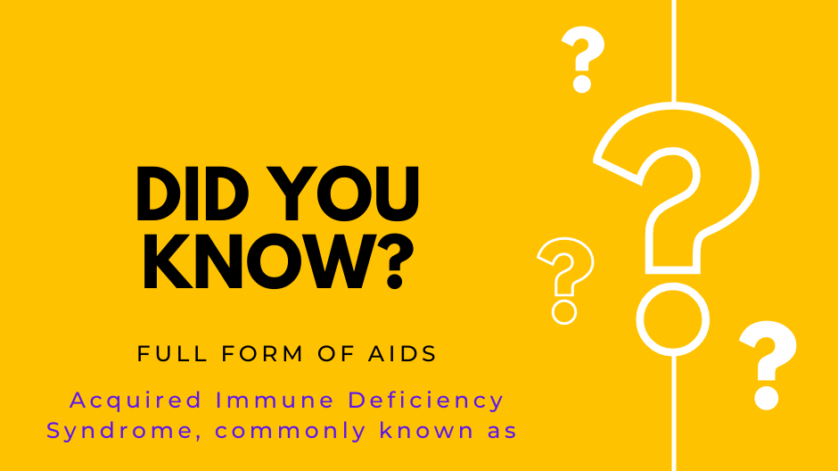AIDS Full Form
Acquired Immune Deficiency Syndrome, commonly known as AIDS, is a deadly disease caused by the human immunodeficiency virus (HIV). It attacks the immune system, making it difficult for the body to fight off infections and diseases.
History
AIDS was first identified in the early 1980s, and since then, it has become a global epidemic. According to the World Health Organization (WHO), approximately 38 million people are living with HIV/AIDS worldwide, and over 700,000 people die from AIDS-related illnesses every year.
How HIV Spread ?
HIV is transmitted through the exchange of body fluids such as blood, semen, vaginal fluids, and breast milk. The most common ways that HIV is spread include unprotected sex with an infected partner, sharing needles or other injection drug equipment with an infected person, and mother-to-child transmission during childbirth or breastfeeding.
While HIV can affect anyone, certain populations are more vulnerable to contracting the virus. These include men who have sex with men, people who inject drugs, sex workers and their clients, and transgender individuals. In addition, poverty, lack of education, and social stigma can also increase a person’s risk of contracting HIV.
Symptoms of HIV/AIDS
The symptoms of HIV/AIDS vary depending on the stage of the disease. In the early stages, a person may experience flu-like symptoms, such as fever, headache, and muscle aches. As the disease progresses, it can cause more serious symptoms such as weight loss, fatigue, and opportunistic infections.
There is currently no cure for HIV/AIDS, but there are treatments available that can help manage the disease and prolong a person’s life. Antiretroviral therapy (ART) is a combination of medications that can reduce the amount of virus in a person’s body and prevent it from replicating. When taken correctly, ART can also reduce the risk of transmitting HIV to others.
Prevention is key when it comes to HIV/AIDS. Using condoms during sex, not sharing needles or other injection drug equipment, and getting tested regularly are all important steps to protect yourself and others from HIV. In addition, programs that provide access to HIV testing, treatment, and support can help reduce the spread of the virus.
Despite significant progress in the fight against HIV/AIDS, there is still much work to be done. Increased funding for research, prevention, and treatment programs is essential to ending the epidemic. In addition, reducing stigma and discrimination towards those living with HIV/AIDS can help ensure that everyone has access to the care and support they need.
AIDS is a deadly disease caused by HIV that affects millions of people around the world. While there is no cure for HIV/AIDS, treatments are available that can help manage the disease and prolong a person’s life. Prevention, through safe sex practices and regular testing, is crucial to stopping the spread of the virus. By working together, we can continue to make progress in the fight against HIV/AIDS and ensure that everyone has access to the care they need.

